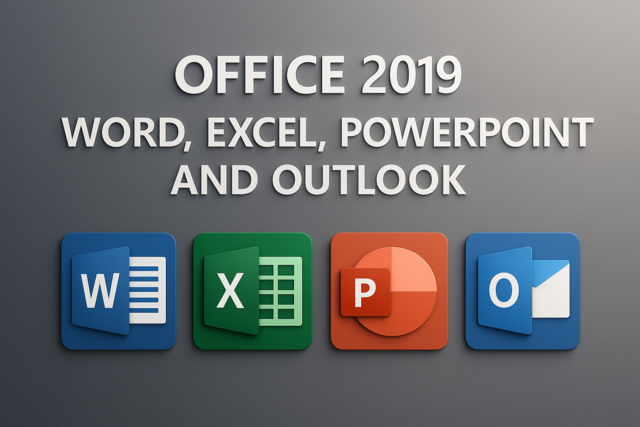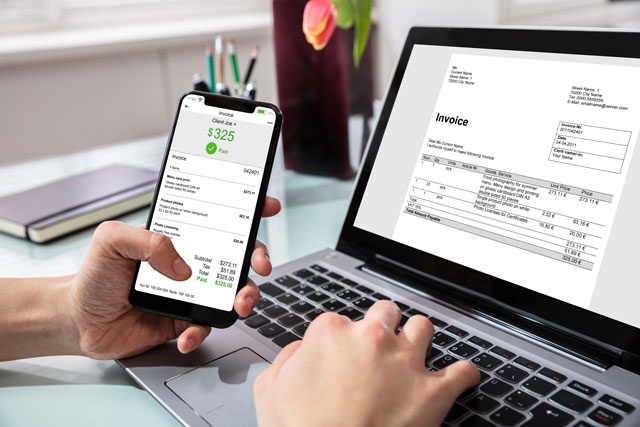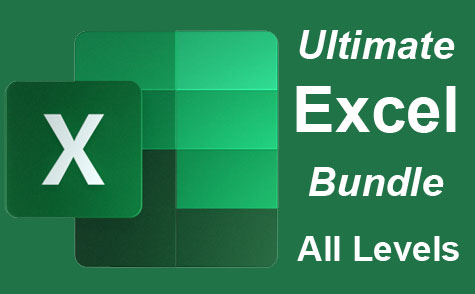Adding Investment Accounts
The first step to managing your investments in Quicken is creating your investment accounts.
Creating investment accounts is just as easy as creating any other kind of account.
In fact, the steps are identical. Go to Tools>Add Account.

In the Primary Accounts section, select the type of investment account you want to add.
There are four types of investment accounts available to you.
- Brokerage
- IRA or Keogh Plan
- 401(k) or 403(b)
- 529 Plan
Select the desired account by clicking on it.
Because the process is pretty much the same for each kind of account, we'll just create a Brokerage account.
Still, it's recommended that you to click through the steps for each kind of account, just to become familiar with the particulars of each one.
Let's click on Brokerage now.

Just like when we created our checking account, you are will be asked to enter the name of your brokerage. If you elect to do so, the next window will ask you to enter your username and password associated with your account.

What you are doing is giving Quicken permission to access and download information from that account. This really automates the process of keeping Quicken up to date.
You may also elect to manually enter your transactions into Quicken, which is what we are going to do. To do this, click Advanced Setup at the bottom of the window (pictured above).

Put a check in the box beside "I want to enter my transactions manually."
Click Next.
The next window will ask you to enter a name for the account. We'll call it "Brokerage3".
Click Next.

Now we are asked to enter a Statement Ending Date, a cash amount, and a money market amount.

For the simplicity's sake, we'll just accept the default date, and then enter in, say, $15,000 in the cash box and $1,500 in the Money Market box.
Click Next and another window pops up, this one asking us to specify what securities are in this account.

If you know the Ticker Symbol, simply type it into the Ticker box; Quicken will automatically download the details.
What's more, if you don't know the symbol, you can have Quicken look it up for you by clicking the Ticker Symbol Lookup button. Clicking this button will launch your web browser and direct it to Quicken.com, where you can simply type in the company name to find out the associated ticker symbol. For instance, in the example below, we entered "Intuit" and find that there are 3 companies with similar names offering stocks.

We'll enter INTU into our ticker box and click Next.
Now we are asked to enter how many shares of the said stock we own. We've entered 25,000 and clicked Next.

Now click Done (pictured below).

You'll then see a message letting you know your account was added successfully.
Click the Finish button.

You're now back to the Quicken screen.
Click on the Investing tab.

Select Brokerage 3 from the list by clicking on it.

Click on the Holdings button (as circled above).

Here you can see how Quicken automatically entered the unit price of our Intuit stock, multiplied it to our number of shares, and came up with the market value of our holdings for us.
The Investing Tab
Now that we've created our investment account, we'll take a closer look at the investments tab and examine the tools it offers to help us manage it.
Below is an example of the Investments Action Bar.

From here we can access your account performance, allocations, and our portfolio. The Account Performance is pictured below.

In the next snapshot, you'll see our portfolio. This is where all of our investments our listed, as well as our Watch List. We'll learn what a Watch List is in just a minute.

Next, we can also view our asset allocations. This shows you where you are with your investments today.

Creating a Watch List
A Watch List is used to track the prices of securities that you don't own or to follow a more popular index in Quicken.
To create a Watch List:
Go to the Investing tab and click on Portfolio.
Next, click Add to the right of Watch List (circled below).

You'll then see this dialogue box:

Enter the Ticker Symbol or click the Look Up button to look it up. If you don't know the symbol, you can enter the name.
We're going to enter KO to the Coca-Cola Co.

Click Done.
As you can see in the snapshot below, Coca-Cola is added to our Watch List.

If you want to add another security, Quicken will take you through the previous steps again.
When you're finished, your securities will appear in the Watch List.
Update Investment Accounts
The easiest way to keep your investment accounts up to date is to connect with your broker or financial institution to update transactions and balances. However, if you've connected Quicken to your investment account online, you can use One Step Update to update those accounts.
Track Your Portfolio's Performance
One of the great things about using Quicken for all your financial transactions is that you can easily see how your investment choices are impacting your finances. In the Investing tab, you can view your entire portfolio and track each investment you make right from the screen.
To make it easier to track your investments, you can customize your portfolio to show fundamentals, different performance measures, as well as other details (as circled below).

You can customize calculations to include all the dates for which you have investment data. Or you can customize to include a range of dates. To do this, click Options. Choose Portfolio Preferences from the drop down menu.

You'll then see this dialogue box:

Setting Up Charts, Graphs, and Reports
Take a moment to glance over the section titles in this section. The two titled "Creating Reports" and "Creating Charts and Graphs" might stand out. They may even make you a little nervous. They sound labor-intensive, don't they? If that is what you're imagining, you can relax, because nothing could be further from the truth. In fact, the name is a bit of a misnomer; you don't actually have to create reports, charts, or graphs in Quicken. The software does it all automatically. All you have to do is click a button and select your desired parameters. A better way to say it would be "viewing reports, charts, and graphs."
So let's see how to do that.
Creating Reports
The Reports button is available in the action bar of every tab except Bills. Below is an example of what it looks like.

Let's click on the Reports button for spending:

Quicken shows you all reports that you can run that have to do with your spending. You can also click on All Reports:

This shows you all the Quicken reports available.
Let's run a Banking report (from the menu above). We'll choose Banking Summary.

If you want to export data from a report to an Excel, PDF, or copy it to the clipboard, click the Export button in the report window.

Click Customize (to the right of Export) to customize the layout of the report.

You can also print or save your report from the report window.
Take time to look at the different reports you can run, and the information each contains.
Getting Register Reports
There are a number of reports that you can create from the register of any banking account. A standard report shows all the transactions that have the same payee or category.
To create a register report:
Open the account register that you want to use.
Right click and select Launch Mini-Report.

This will show the history for the payee you've selected. In the snapshot above, a three year history is shown. Click on the downward arrow to change the length:

Click Show Report to see the register report.

More on Customizing Reports
To learn how to modify reports, click the Reports button, then select Banking>Cash Flow.

Click Customize.

We're now going to look at the options available to us on each tab.
Display. On this tab we can select a title for our report. Since we selected Cash Flow, Quicken has automatically inserted that into the Title box. To change this, simply click in the box and type a new name. We can also change what is displayed in the Rows or Columns. However we can only select a value from one of the dropdown menus, and we cannot enter an arbitrary one. Choose an organization method. There are three options: Income Expense, Cash Flow Basis, and Category Group.
Accounts. Use this tab to select the account groups you'd like Quicken to use to build the report. You can even choose to display hidden accounts.
Categories. Use this tab to select the categories you'd like to use in your report.
Payees. This tab allows you to select or exclude certain payees from your report.
Categories. Use this tab to select or exclude categories.
Advanced. Use this tab to further fine-tune your report. You can specify an amount, include unrealized gains, use tax-related transactions, and transaction types. You can also choose to include or exclude all transfers, and subcategories. Use the selections in the Status box to include items that have not cleared, newly cleared, or have been reconciled.
Click the OK button when you're finished.
When you customize or change a report, the different instances are accessible by clicking the Back  button, the Forward
button, the Forward  button or the History button. If there is only one instance of a report, these buttons are faded and unusable.
button or the History button. If there is only one instance of a report, these buttons are faded and unusable.
Creating Graphs
Charts and graphs are great tools for seeing at a glance who's getting the biggest piece of your pie. In Quicken, creating them is just as easy as creating reports. In fact, the process for doing both is almost identical.
To create charts and graphs, click on the Reports button, go to all Reports, then the Reports & Graphs Center.

The Reports & Graphs Center is pictured below.

Some selections will create pie graphs, while others will create line charts. We'll choose Spending by Category (as shown in the left column above).

As you can see, when we clicked on Spending By Category, three buttons appeared: Customize, Show Report, and Show Graph. To create a graph, click Show Graph.

If you want to see the report, you can click Show Report at thebottom right of the screen (as pictured above).
Maintaining Your Quicken Files
Backing Up Your Files
Backing up your Quicken files in an important task. It's something you want to make sure you do. If something should happen that you would lose your Quicken files, you would have your back up there to use. In other words, you wouldn't lose all your financial data that you had stored in Quicken.
To create a backup, either use a flash drive or a writable CD.
In Quicken, go to File>Backup and Restore>Backup Quicken File.

You'll then see this dialogue box:

Specify the drive you want to use for the backup. If you're using a CD, specify the CD-ROM drive, etc.
Click the Back Up Now button when you're ready to back up your files.
Using Your Backup Files
If something happens and your Quicken files get damaged or destroyed, you can use your backup files to replace them.
To do so, get the backup disk or drive, then start Quicken.
Go to File>Backup and Restore>Restore from Backup File.
You'll then see the Restore from Backup File dialogue box, pictured below.

Select the backup copy you want to use, then click Restore Backup.
Creating New Quicken Files
In Quicken, a file is where all your accounts are stored.
You can create more than one Quicken file if you want. Perhaps you and your spouse have separate finances, and you want to use Quicken to manage both. You can do that.
Here's how to set up a new file:
Go to File>New.

Check the box beside New Quicken file, then click OK.
Next, you'll be asked to enter a name for the file.

Click OK after you've entered a file name.
Once your new file has been created, you will have to go through and set up all the accounts.
Moving Between Files
It's important to remember that you can only work with one file at a time. However, you can switch between files if you need to do that.
To switch between files, go to File>Open.
You will then see the Open Quicken File dialogue box.
Find the Quicken file that you want to open. When you find the file, click OK to open it.
Shrinking Quicken Files
After a while, your Quicken file can start to get too big for its britches. You have so much information in it, that it seems like it takes forever to back up.
Shrinking a file means getting rid of some of the data. In reality, what you will do is decide on a cut-off point for the data that's in your file. For example, you might only show balances and transactions after a certain date. If you have years' worth of data in your Quicken file, this can be a great idea.
However, since you're "messing" with your data, you're also taking a chance on losing it if something goes wrong in the process. For this reason, you always want to create a backup before you shrink your file.
After you create the backup, go to File>File Operations>Year-End Copy.

In the dialogue box (pictured above), tell Quicken what you want in the current data file. This is the file that you will work with AFTER you shrink the file.
You can:
- Do nothing and everything will remain the same.
- Enter a date. Only the transactions that occur after that date will appear in your data file
Next, you can specify a backup file name and location. This will be the archive of all your data.
Click OK when you're finished.






























